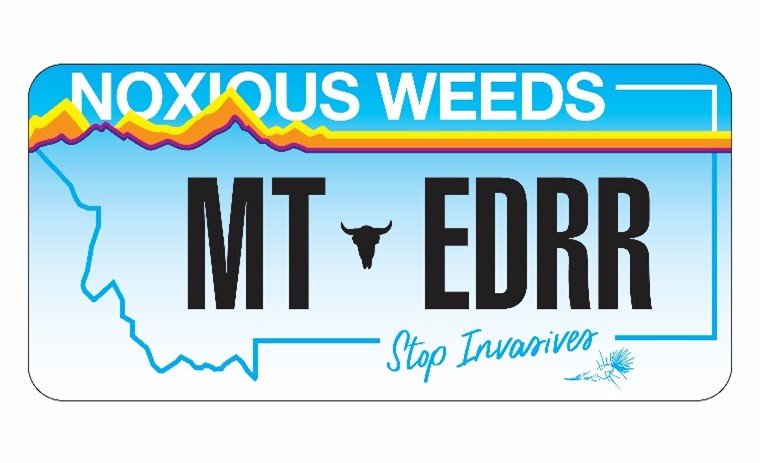Early Detection, Rapid Response Program of the Montana Department of Agriculture
by Josh Wagoner, EDRR Coordinator, [email protected]
Introduction

If you work with noxious weeds in Montana, you may be familiar with the Early Detection, Rapid Response (EDDR) Program of the Montana Department of Agriculture (MDA). The program began in 2021, but the idea was long on the mind of Jasmine Chaffee, Montana’s State Weed Coordinator. Counties who were working on the highest priority weeds, i.e., those listed as Priority 1 species, sometimes Priority 2, like tansy ragwort and rush skeletonweed, often have limited resources to deal with these species, and working across jurisdictional boundaries can be difficult and complex. The EDRR Program helps to alleviate these issues, since eradicating or containing these species is critical for the entire state.
EDRR Program and Task Forces
The EDRR Program provides support and help where capacity is lacking. Specifically, the EDRR Program can assist in securing funding, writing management plans, determining best management practices, coordinating spring and fall partner meetings, producing educational material, giving presentations, bringing people together, and even helping to treat high priority weeds. One important aspect of the program is supporting Task Forces. Task Forces have a leader, generally employed by a county weed district, coordinating management efforts and functioning as an expert, working to contain or eradicate a specific EDRR weed, using an MDA Noxious Weed Trust Fund grant. Montana currently has statewide task forces for dyer’s woad and tansy ragwort and countywide task forces for blueweed, common bugloss, and rush skeletonweed. County level task forces usually still assist beyond their borders.
Recent Activities

Treating rush skeletonweed in Ravalli County, fall 2023.
Some of the EDRR Program’s recent activities have included helping to coordinate an annual gathering of stakeholders to treat tansy ragwort at a satellite population in Lewis & Clark County (within Montana, tansy ragwort has been primarily and historically contained to Lincoln County); quickly assembling a team to smite a surprise patch of invasive phragmites west of Bozeman in Gallatin County; and presenting on Palmer amaranth and waterhemp at the Montana Weed Control Association Spring Coordinator Training in Miles City. If an action is needed to help keep high priority invasive plants out of Montana, the EDRR Program is willing to do it.
Get in Touch
The EDRR Program is wide-ranging, malleable, and constantly developing. As the EDRR Program Coordinator, I am passionate about weed management, the land of Montana, and my colleagues, so if I’m asked to collaborate, I do my very best to say yes. The EDRR program and the other MDA Noxious Weed Group programs strive to listen to our stakeholders’ needs. If you have ideas on how I can help or the EDRR Program can do better, please reach out. Read more about MDA’s EDRR Program online.
Further Information
For more information about the Monthly Weed Post, contact Extension Invasive Plant Specialist Jane Mangold. Past posts are available in the Monthly Weed Post Directory.
This weed post is also available as a printable PDF (280 KB).
